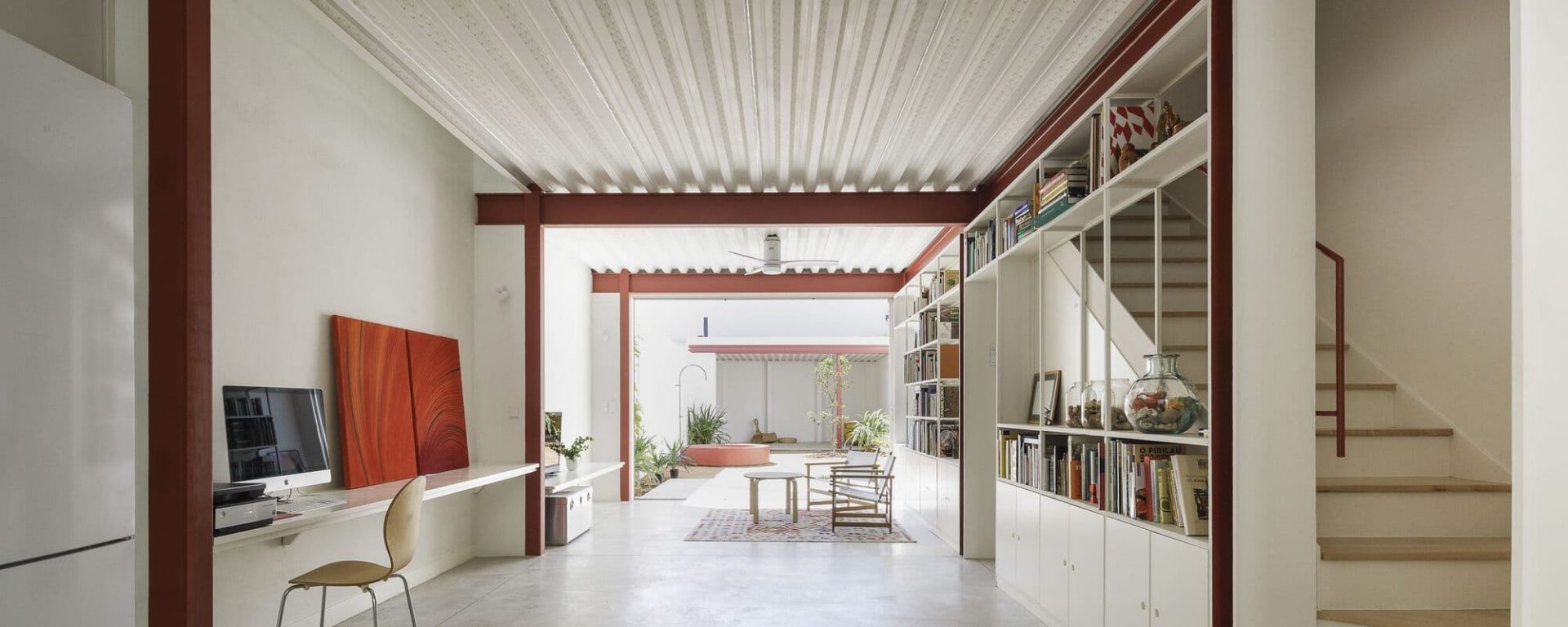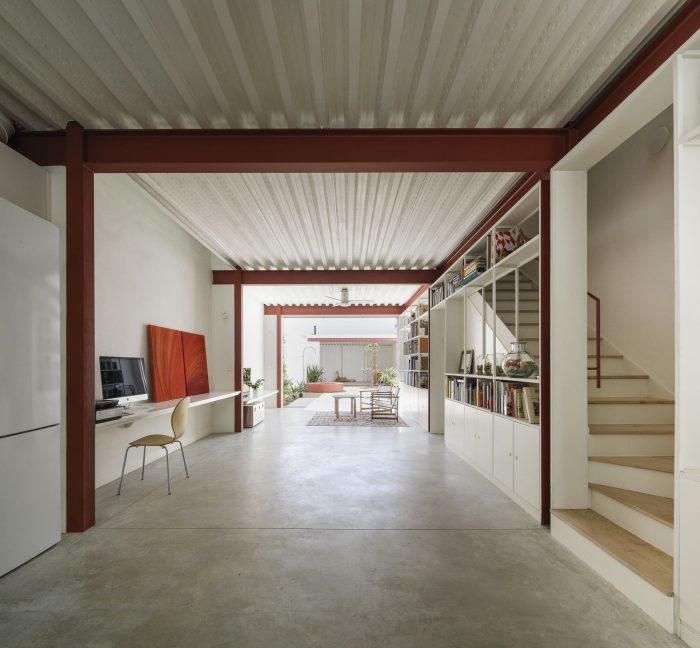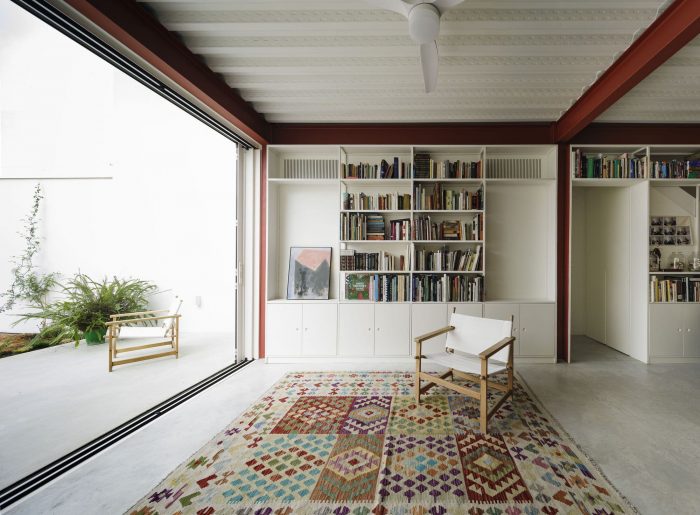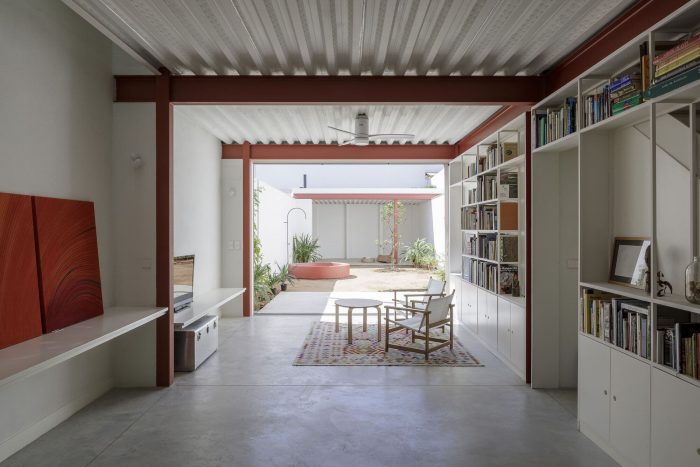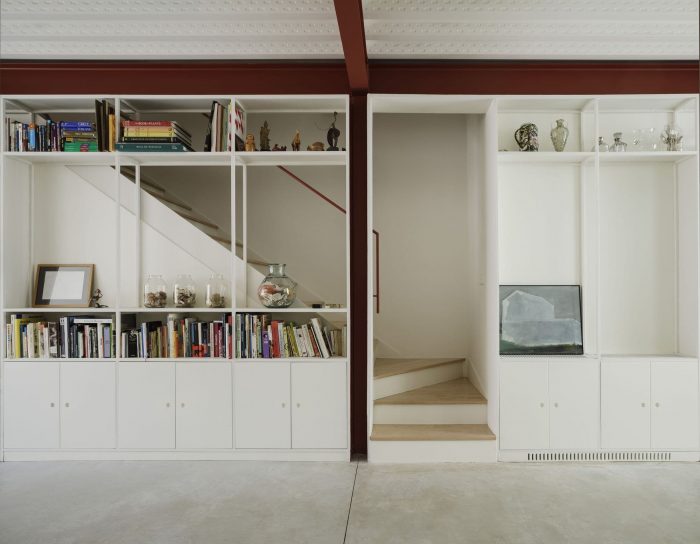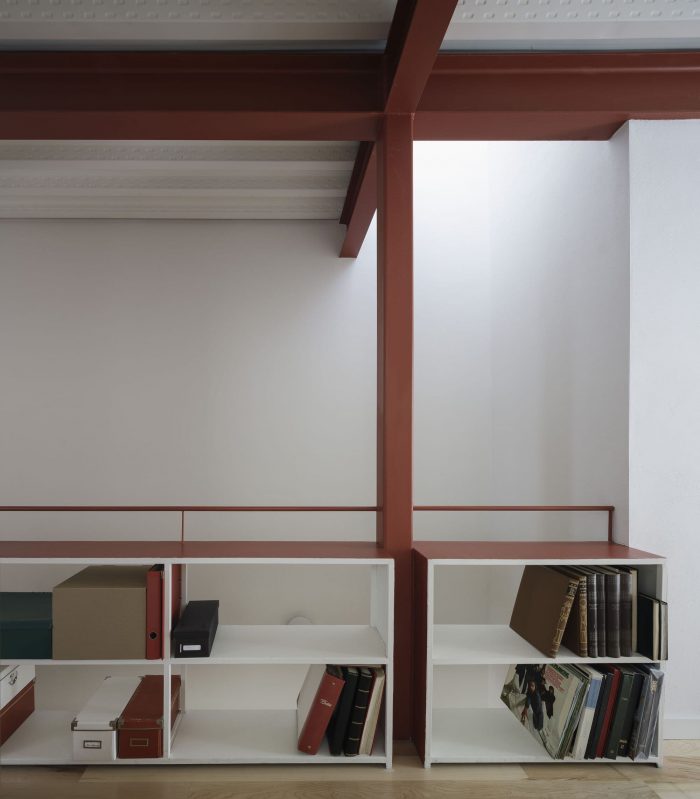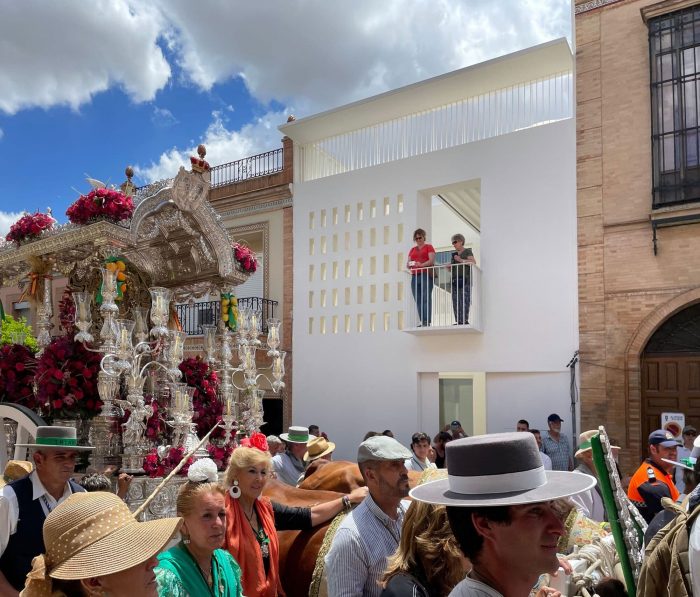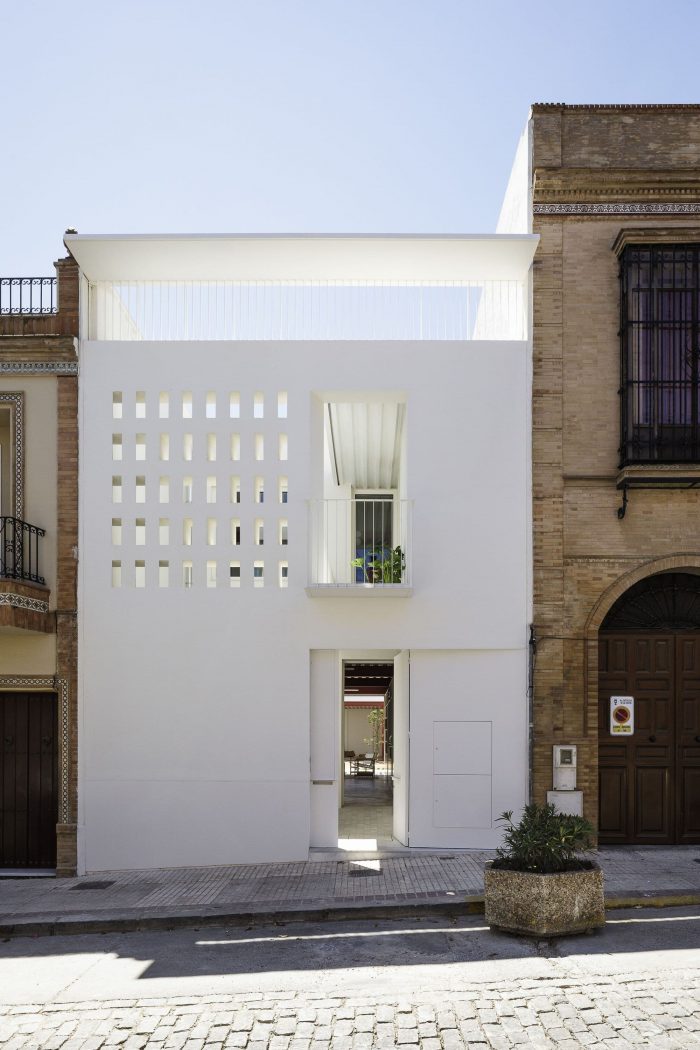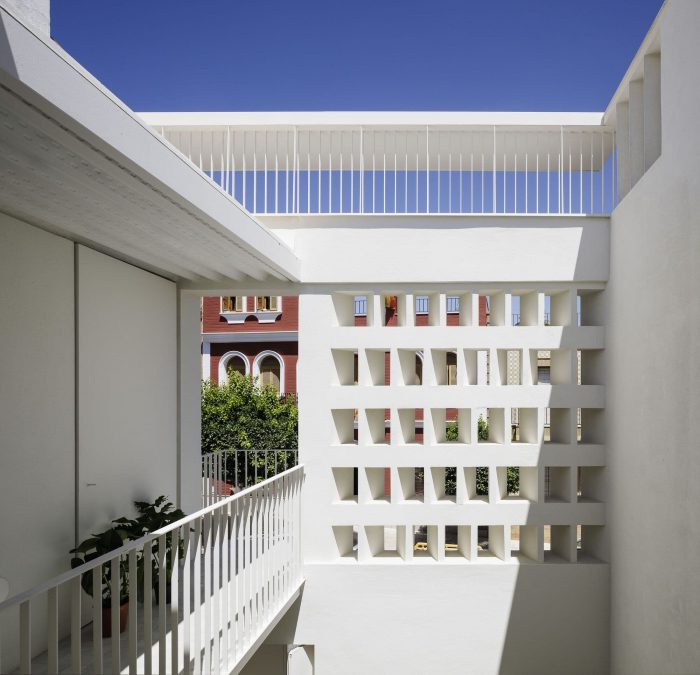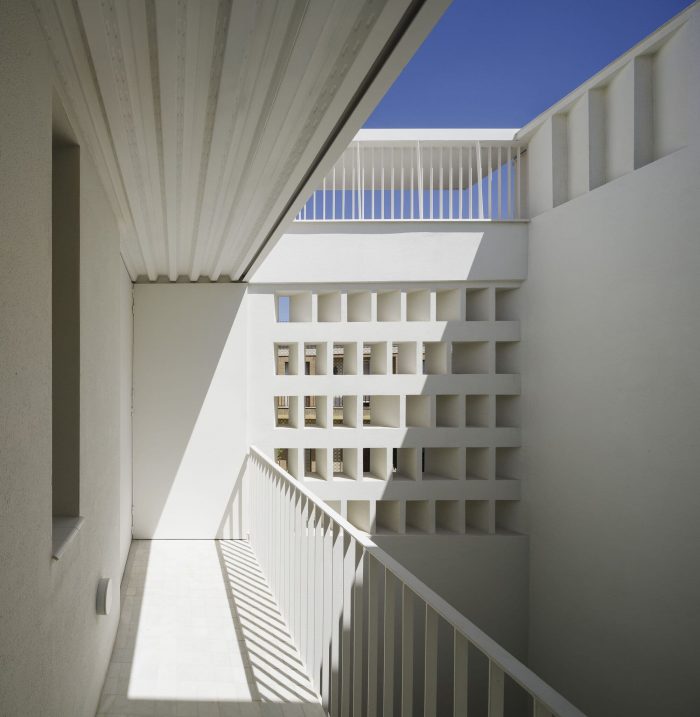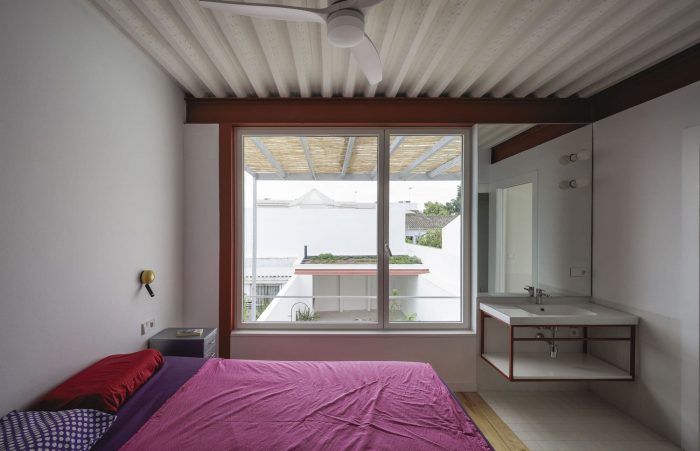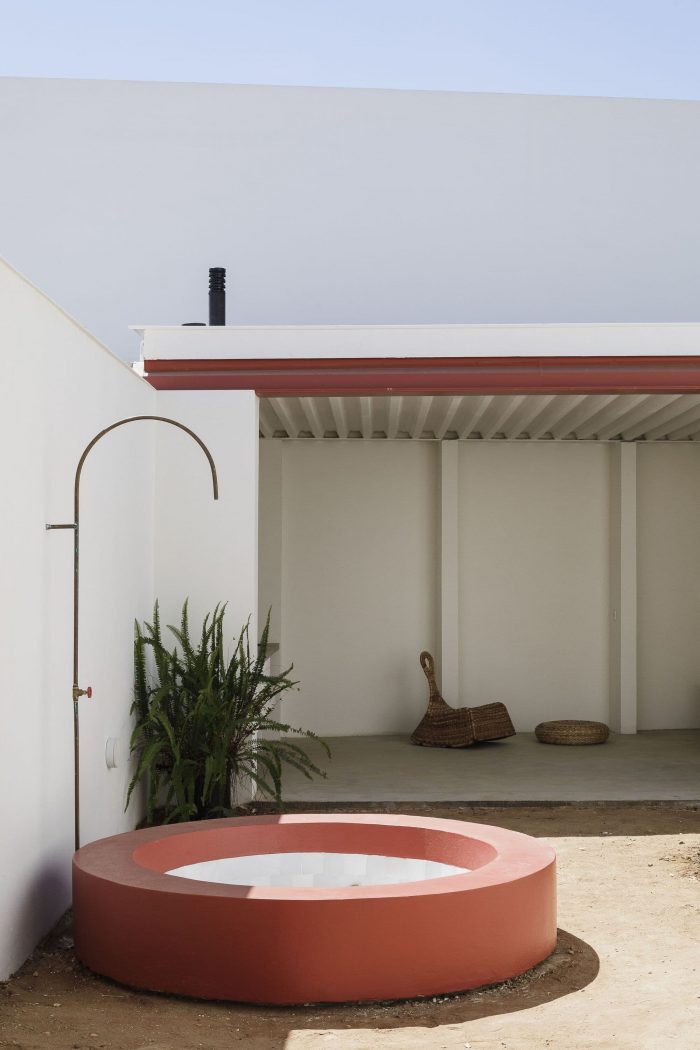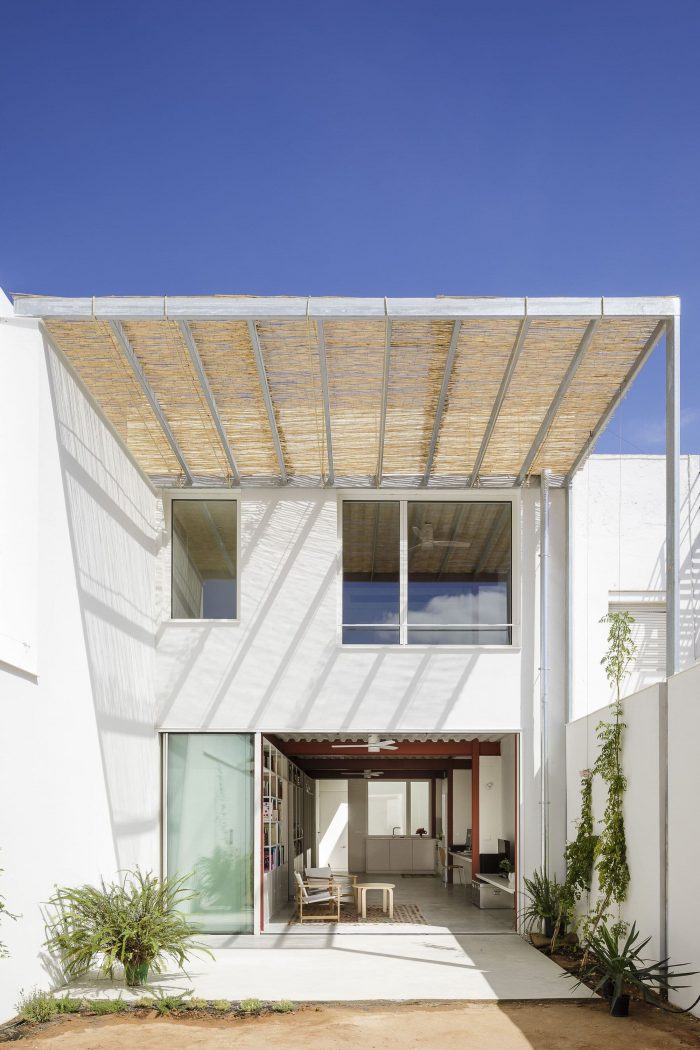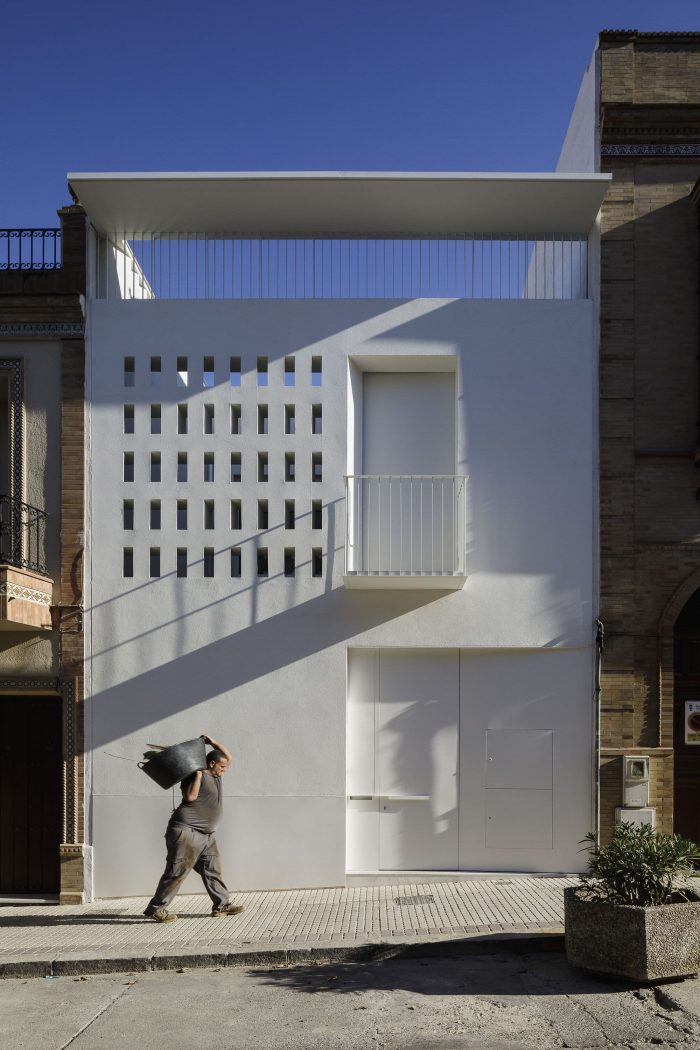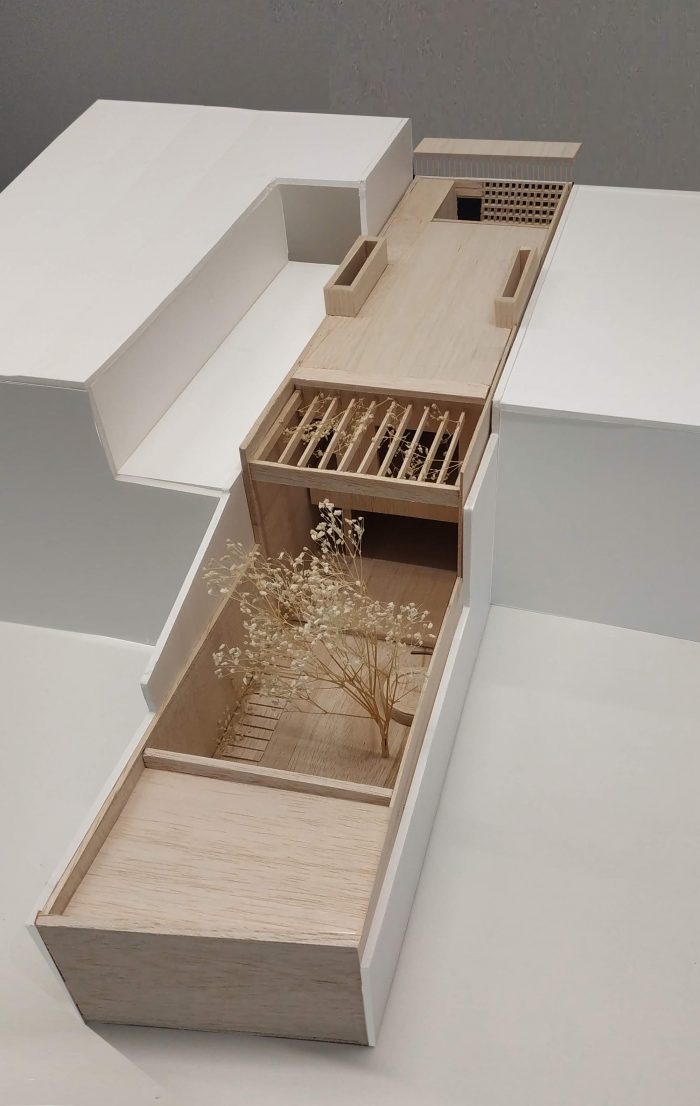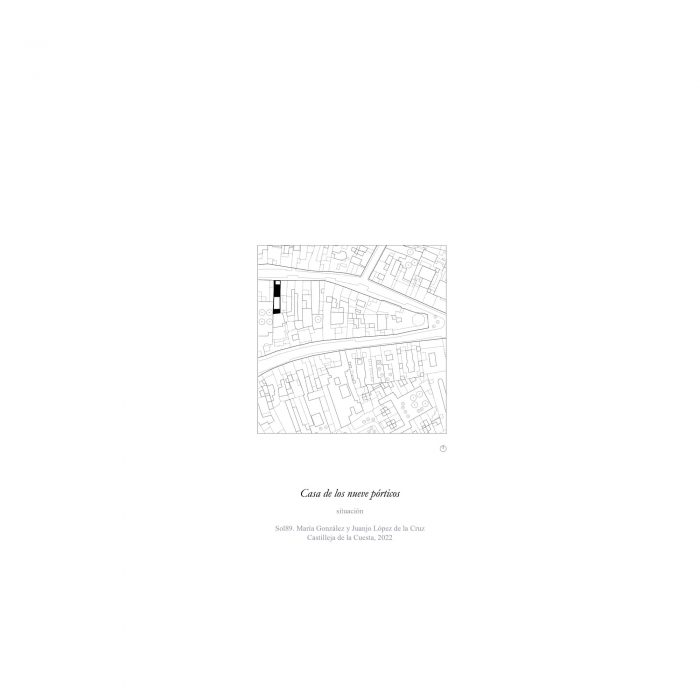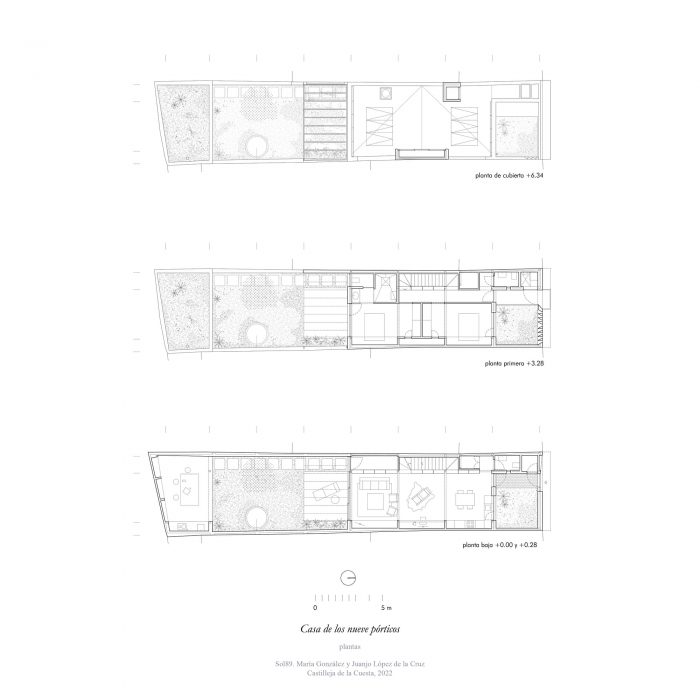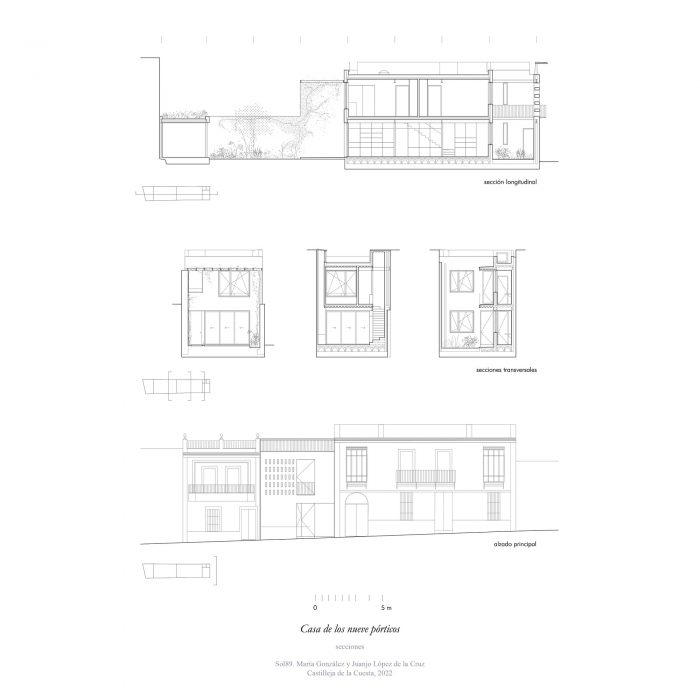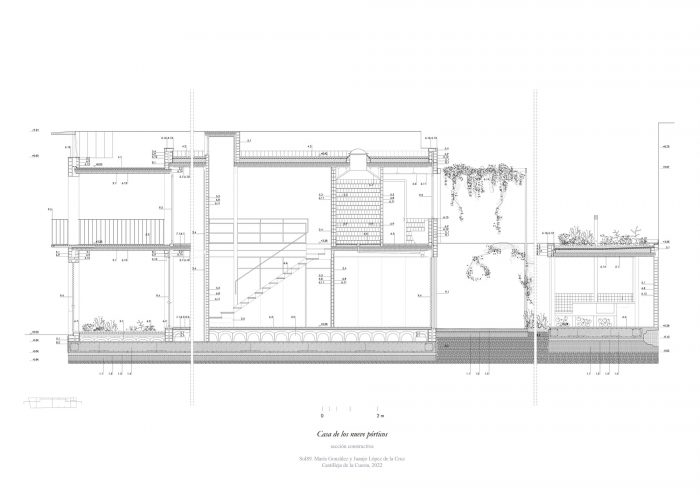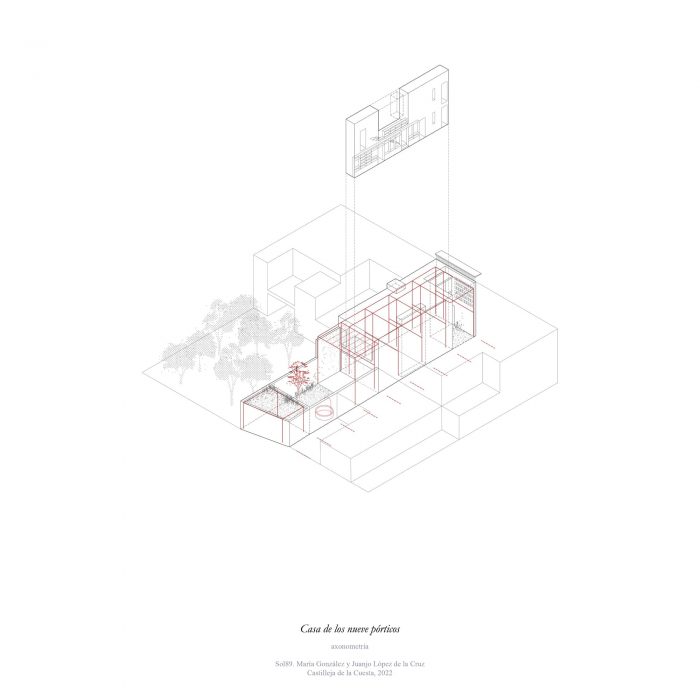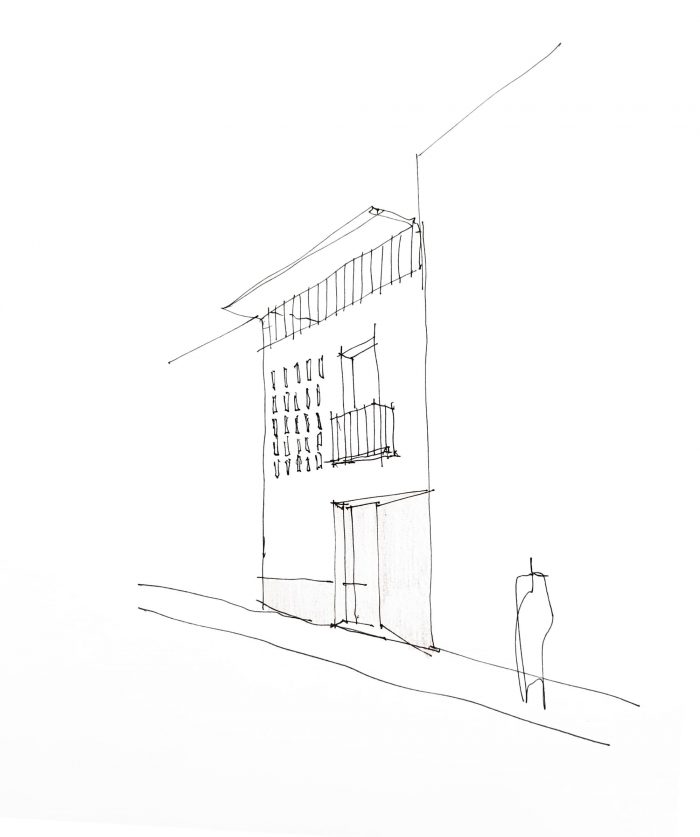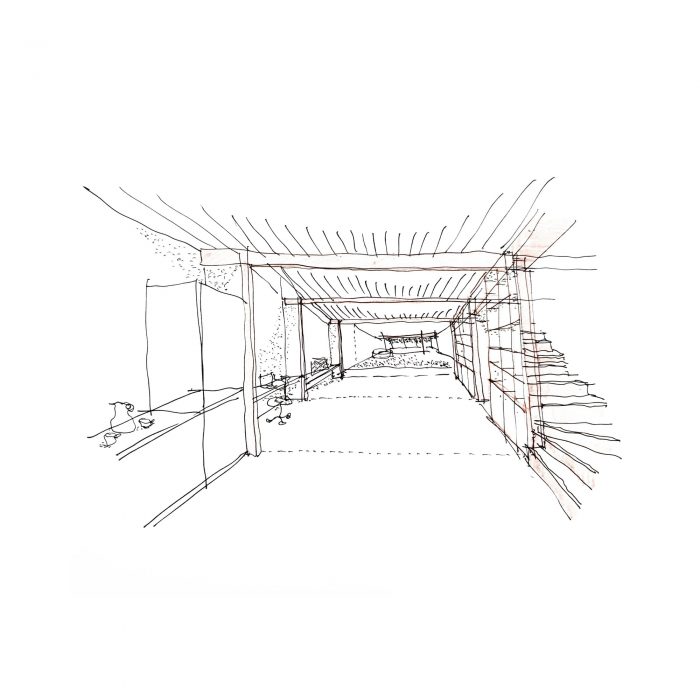杰玛和阿尔瓦罗在比利时生活了几十年后,决定建造他们的第一栋房子,他们在加泰罗尼亚和阿斯图里亚斯的生活记忆始终存在。他们回到安达卢西亚,也就是他学习的地方,寻求一个明亮、和平的南部城镇的生活,靠近塞维利亚,在那里他们可以与共同的老朋友再次见面。
Gemma and Álvaro decide to build their first house after decades of living in Belgium with the memory of their life in Catalonia and Asturias always present. They return to Andalusia, where he studied, seeking the life of a bright, peaceful southern town, close to Seville, where they can meet up again with old mutual friends.
他们获得了一个5×30米的地块,在主要街道上有一个几乎朝北的单一外墙。这块地又窄又长,是农业分区的结果,允许房屋与一些用于收集农具或畜栏的建筑共存。将要开发的项目是适度的;它只是几间卧室和一些特殊性,如一个可以享受 “土耳其浴室 “的房间,一个可以让Gemma制作版画的地方,以及她可以拥有一个小型户外厨房的地方。他们期待着朋友和家人不时的来访,他们愿意接待他们。他们带着物品、书籍和画作,这些都是他们一生的痕迹,他们也带着曾经生活在激烈的地方的记忆,他们想恢复这些地方的经验:一口井和一棵树,一个天井,南方的光线。
They acquire a 5×30 meter plot with a single facade facing almost north on the main street. The site is narrow and long, it is the result of the agricultural subdivisions that allowed the coexistence of the house with some buildings destined for the collection of farming tools or corrals. The program to be developed is modest; it is just a couple of bedrooms and some particularity, such as a room where both can enjoy a “hammam”, a place where Gemma can make prints, and where she can have a small outdoor kitchen. They expect visits from friends and family from time to time whom they would like to host. They carry objects, books, and paintings, traces of a lifetime, they also carry with them memories of having lived in intense places whose experience they would like to recover: a well and a tree, a patio, the southern light.
场地的比例和这些地块的农业记忆表明,通过重复等距离的结构门廊来产生空间,这些门廊定义了建在一到两层的海湾,或被挖空以产生天井,提供了一个连续的空间,使其功能和环境特征产生细微变化。通过这种方式,创造了一个基于第一个接待天井的序列,澄清了与街道的关系,然后主屋占据了三个海湾,还有一个海湾只剩下结构,正式成为一个遮阳的门廊,作为一个天蓬,两个海湾组成了南边的天井(而是一个 “hortus conclusus”),最后一个体积作为一个亭子完成了场地,你可以和朋友一起绘画和烹饪。这最后一个体量的屋顶比房子的其他部分低,种植了不同的灌木,成为花园的延续,那里的水井和住在杰玛记忆中的树形成了柿子和一个小池子,池子里的水被排空,为灌溉提供水源。
The proportions of the site and the agricultural memory of these plots suggest generating space by repeating equidistant structural porticoes, which define bays that are built on one or two floors or are hollowed out to generate patios, providing a continuous space that nuances its functional and environmental characteristics. In this way, a sequence is created based on a first reception patio that clarifies the relationship with the street, then the main house occupies three bays, one more bay of which only the structure remains to formalize a shaded porch as a canopy, two bays that make up the patio to the south (rather a “hortus conclusus”) and a final volume that finishes off the site as a pavilion where you can paint and cook with friends. The roof of this last volume, lower than the rest of the house, is planted with different bushes getting a continuation of the garden where the well and the tree that lived in Gemma’s memory take shape as persimmon and a small pool whose emptying provides water for irrigation.
金属结构和 “almagra “颜色使空间有节奏感,并配置了一个连续的参考。标准框架将支撑物从分隔墙后移,以避免与邻近有承重墙的房屋发生冲突,由此产生的结构线和纵向边界之间的空间被设备、技术空间和住宅的存储空间所占据,创造了两个不平等的横向带,加厚了房屋的界限。
The metallic structure and the “almagra” color rhythm the space and configure a continuous reference. The standard frame sets the supports back from the dividing walls to avoid conflicts with the neighboring houses with load-bearing walls, and the resulting space between this structural line and the longitudinal boundaries is occupied by the equipment, the technical spaces, and the storage of the home, creating two unequal lateral bands that thicken the limits of the house.
房子的两端向南北两个天井开放,每个窗台都安装了一系列风扇,中间窗台一侧有一个自然通风的烟囱,所有房间都有横风,再加上南面立面即将覆盖的木樨树的保护,缓解了南方的热量。
The house is open at the ends to two patios located to the north and south with a series of fans installed in each bay and a natural ventilation chimney located on the side of the middle bay, getting a cross breeze is achieved in all rooms that, together with the protection of the southern elevation with the canopy that will soon be covered with bignonias, alleviate the southern heat.
这座房子作为一个巨大的白色建筑展现在街道上,就像卡斯蒂利亚的第一批建筑一样,现在已经消失了,取而代之的是更多商业和直接建筑行业的典型颜色和材料。檐口、门楣、延伸到街道上的阳台、镂空的墙面、以及可以瞥见天井大厅的门帘,这些都建立了一种语法,参考了流行建筑的元素,促进了私人和公共之间的相遇,并有助于建立街道。
The house is shown to the street as a massive white construction, such as the first constructions of Castilleja that have been lost and replaced by colors and materials typical of the more commercial and immediate construction industry. A cornice-visor, a frieze, a balcony that extends over the street, the openwork wall, and the door shutter from which to glimpse the patio hall establish a syntax that refers to elements of popular architecture that facilitate the encounter between the private and public and help to build the street.
Architects: sol89
Area : 1798 ft²
Year : 2022
Photographs :Fernando Alda, Álvaro Marín
Lead Architects : María González García, Juanjo López de la Cruz
Collaborators : Javier Valenzuela, Miriam Domínguez
Structure : Duarte y Asociados
Installations : Miguel Sibón
Technical Architect : Cristóbal Galocha
Builder : Meta 360
City : Castilleja de la Cuesta
Country : Spain

